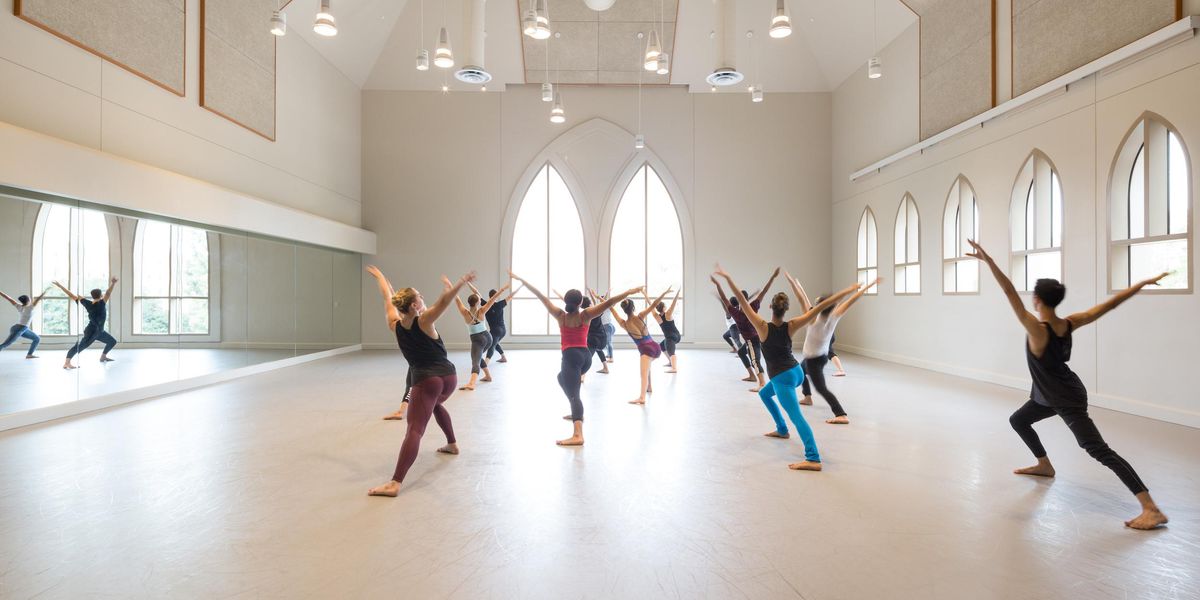Reggie Wilson/Fist and Heel Performance Group
New York Live Arts, NYC
March 14–17, 2012
Performance reviewed: March 14
Reggie Wilson embodies the Ghanaian Akan symbol of Sankofa, a bird that looks backward, revisiting the past, to seek the egg that will hatch its future. Wilson’s career as a researcher and independent choreographer has been devoted to seeking the source of African root beliefs and practices within the secular and spiritual cultures of the African diaspora. His drive for this knowledge has taken him from the American midwest to the Mississippi Delta, from Caribbean isles to the nations of Africa and home to the black churches of Milwaukee. In the course of these many travels and his stewardship of Brooklyn-based Reggie Wilson/Fist and Heel Performance Group (FHPG), he has won numerous honors, including a 2002 Bessie Award.
Wilson’s new full-length evening—TheRevisitation, commissioned by New York Live Arts—comes at a time when Danspace Project, another major dance venue, is also presenting his work among a host of contemporary black dance artists in Ishmael Houston-Jones’ Parallels platform. The NYLA program, intentionally or not, serves as a useful offshoot of Parallels, an opportunity to examine one of its featured artists in depth.
Wilson has designed TheRevisitation as a cluster and reimagining of works from his past. It opens with a lengthy segment of song—an unusual gambit for a dance show but faithful to Wilson’s interests and FHPG’s history. Sitting with longtime FHPG members Lawrence Harding and Rhetta Aleong, he talks to the audience with seemingly shy, definitely sly humor and engages his colleagues in rounds of traditional songs. The Black southern Baptists’ “Jesus on the Mainline,” for example, gets a fresh treatment in the trancier manner of the Caribbean’s Spiritual Baptists.
Reggie Wilson, Lawrence Harding, and Rhetta Aleong
Harding (originally from Sierra Leone) and Aleong (from Trinidad and Tobago) offer samples of funny and singularly strange lyrics that bring the listener up short, even this writer with her Caribbean roots. Later, Wilson moves into movement, where matters are also never as straightforward as a watcher might expect.
He expanded his famous INTRODUCTION solo, an informal recounting of his travels and research that starts off as talk, sneakily, steadily accruing the polyrhythmic movement and gruff, hiccupping aspirations of trance worship. We watch the researcher become the researched.
A new piece, the duet, brilliantly danced on opening night by Raja Kelly and Paul Hamilton, recycled bits of duets made as early as 1989. In Big BRICK: a man’s piece (2002), singing rose again, and cascades of Mylar strips brightened the space where four men danced.
A densely-packed collage of imagery and ideas, BRICK visualizes black men in relationship to one another and in teams, sports action breaking out more than once. You can sense Wilson, always the observer, searching for fundamental roots of black manhood in everyday experience. Living spirit seems more elusive here, but keep watch for it.
Photos by Alexandra Corazza, courtesy NYLA.
Pictured at top: Wilson’s
Big BRICK: a man’s piece




